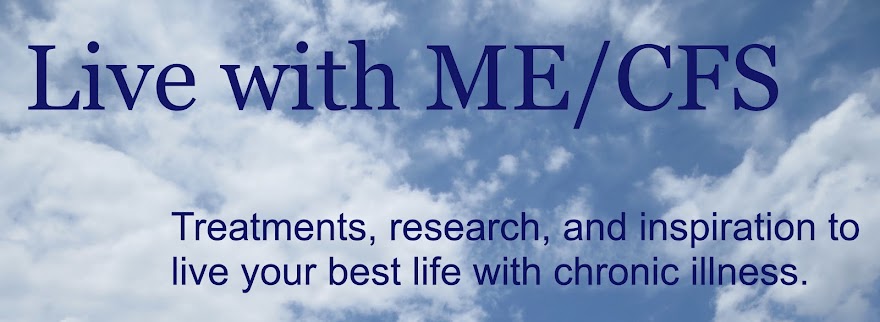 |
| Copyright: 123RF Stock Photo |
And today's topic is...Physical Therapy. And that is because I was just discharged from PT today for an arm/shoulder injury - hurray! Woohoo! I'm not back to 100% yet, but I am about 70% of the way there and can hopefully continue to improve on my own, with what I have learned. So, PT has been helpful to me (and again last year when I injured my shoulder in a different way), BUT successful PT is a tricky business for anyone with ME/CFS.
I want to be clear that I am NOT recommending regular PT as a treatment for ME/CFS. That is a common practice that is often harmful to ME/CFS patients rather than helpful. The Graded Exercise Therapy (GET) approach to "treating" ME/CFS has been recently debunked (I will write a post on that soon), though thousands of doctors and clinics around the world continue to recommend it. Instead, here are 3 tips for patients with ME/CFS for PT that will help and not harm them.
PT for ME/CFS Patients for an Injury
Though PT is not recommended for ME/CFS patients, sometimes - as in my case this summer - it is necessary in order to help heal an injury or after surgery for an injury. When that happens, it is absolutely critical on Day 1 to educate your physical therapist(s) about the impact of PT for an ME/CFS patient - particularly the exercise intolerance and Orthostatic Intolerance (OI).
In this post, Physical Therapy for ME/CFS Patients, I outline how to do that and provide a short and simple 2-page document for you to print and give to your physical therapist(s). I created the document when I started my own PT last year, and it has been well-received by every PT I have worked with since. They have all appreciated the information and taken it to heart, using extreme caution and modifying my PT so that it doesn't make me worse. For instance, many exercises that are normally done standing up, I do lying on my back. Bonus: I have helped to educate medical professionals about ME/CFS and its severity.
Specialized Manual PT for Treating ME/CFS
There is one kind of PT that can be used to help improve ME/CFS, but it's not the kind that involves making you jump on the stationary bike and exercise. It's a specialized form of manual PT that Dr. Peter Rowe of Johns Hopkins - a renowned pediatric ME/CFS expert - developed along with a team of physical therapists. Manual PT means the physical therapist does the work instead of the patient, so it starts out with the patient entirely passive and lying down. This particular type of manual PT utilizes a technique called nerve gliding, which helps ease the movement of tendons and ligaments that are not moving smoothly, thus easing pain and improving mobility. The blog post at the link provides more information plus links to how to set it up for yourself or your child. I know several teens with ME/CFS and/or EDS who have benefited greatly from this in both reducing pain and improving their overall condition, in combination with treating OI (see below).
First, Treat Orthostatic Intolerance
Whether going to PT for an injury or for that specialized type of manual PT for ME/CFS, you won't get very far or be able to do much without first treating Orthostatic Intolerance (OI).
OI is an integral part of ME/CFS - over 97% of ME/CFS patients
have some form of OI (and most of those with fibro & many with Lyme,
too). So, if you or your child has ME/CFS, then he or she does have OI, too. OI is an
umbrella term encompassing several conditions where the body can not maintain a
steady blood pressure and/or heart rate when upright (standing or even sitting
up). The two most common types of OI in ME/CFS are NMH, where the BP drops when you are upright, and POTS, where the HR goes up when you are upright. Rarer forms of OI - like where the
BP rises when upright - also exist. The good news is that OI is fairly easy to
treat & often brings dramatic improvement to all symptoms. That link to my OI post explains all about OI, how to diagnose and treat it, and includes our own very positive experiences in improving all symptoms by treating OI.
If your HR is constantly going over your limit (indicating a "crash" is imminent) as soon as you stand or sit up, then you can't make much progress with PT. Treat OI first and then you can tolerate some exercise without crashing afterward, so you can tolerate modified PT...plus all of your symptoms will improve, you can be more active in your everyday life, and your quality of life will improve, too!
Hope that is helpful to you. What have your experiences with PT been? Do you think you or your child could benefit from the specialized for of Manual PT for ME/CFS? Let me know in the comments.

No comments:
Post a Comment